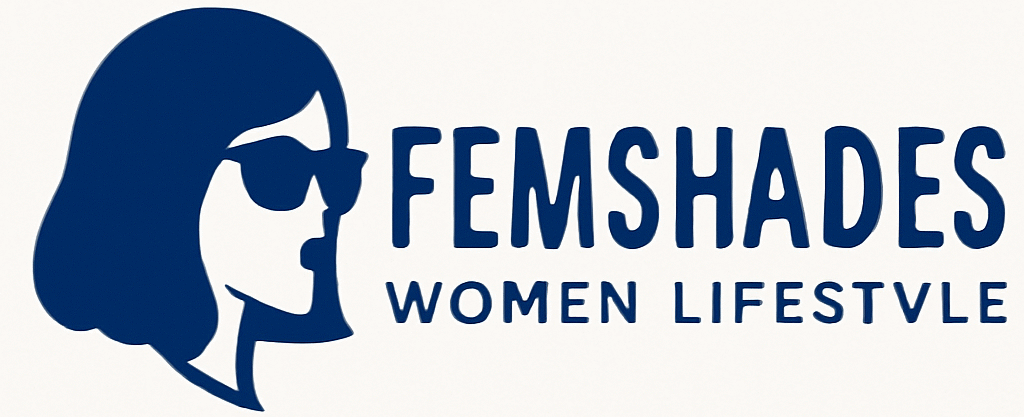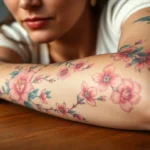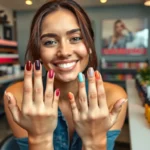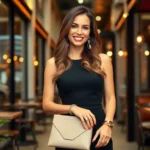Handling the industry of business casual can feel like walking a tightrope – we want to look professional yet approachable while staying comfortable throughout our busy workdays. The modern workplace has evolved dramatically and so has the dress code that defines our professional image.
We’ve all stood in front of our closets wondering if that dress is too casual or if those shoes strike the right balance between comfort and style. Business casual for women isn’t just about following rules – it’s about creating a wardrobe that empowers us to feel confident and capable in any professional setting.
The key lies in understanding how to mix and match versatile pieces that work seamlessly from morning meetings to after-work networking events. We’ll explore practical outfit formulas that eliminate the guesswork and help you build a foolproof business casual wardrobe that reflects your personal style while meeting workplace expectations.
Essential Business Casual Pieces Every Working Woman Needs
Building a successful business casual wardrobe starts with investing in key foundational pieces that we can mix and match effortlessly. These versatile essentials form the backbone of countless outfit combinations that’ll take us from Monday meetings to Friday presentations.
The Perfect Blazer Collection
Blazers serve as the ultimate power piece in our business casual arsenal, instantly elevating any outfit while maintaining professional polish. We recommend starting with three core blazer styles: a classic navy blazer for traditional office settings, a black customized blazer for versatility across seasons, and a neutral colored blazer in gray or beige for softer workplace environments.
Structured blazers with defined shoulders create a commanding presence during presentations and client meetings. Unstructured blazers offer comfort for long workdays while still looking put together over blouses or sweaters. Cropped blazers pair beautifully with high waisted trousers and create modern silhouettes that feel fresh and contemporary.
Quality matters significantly when selecting blazers, so we suggest investing in wool blends or cotton twill fabrics that maintain their shape throughout the day. Single breasted styles provide the most versatility, while double breasted options add sophisticated flair for special occasions or important meetings.
Versatile Blouses and Button-Down Shirts
Blouses and button down shirts create the foundation layer that we build our business casual outfits around, offering endless styling possibilities. Classic white button downs remain timeless staples that pair with literally everything in our wardrobes, from customized pants to pencil skirts.
Silk blouses in soft colors like blush, sage, or cream add feminine touches while maintaining professional appropriateness. Cotton blend shirts provide durability and easy care, making them perfect for busy work weeks when we need reliable pieces that look crisp.
Pattern variations keep our business casual looks interesting without being distracting. Subtle stripes, small florals, or geometric prints add visual interest while remaining workplace appropriate. Sleeveless blouses work wonderfully under blazers during warmer months, while long sleeved options provide coverage for conservative office environments.
Fit details make important differences in how professional we appear. Customized fits through the waist create polished silhouettes, while relaxed cuts offer comfort during long days at the desk.
Professional Pants and Trousers
Pants and trousers form the workhorse foundation of our business casual wardrobe, providing comfortable yet polished options for daily wear. Straight leg trousers in navy, black, and charcoal create versatile bases that coordinate with virtually any top in our closets.
Wide leg trousers have gained popularity in modern workplaces, offering comfort and contemporary style that feels current and fashion forward. Ankle length styles work perfectly with loafers, low heels, or pointed flats, creating clean lines that elongate our legs.
Fabric choices impact both comfort and professional appearance throughout our workday. Wool blends provide structure and wrinkle resistance, while ponte knits offer stretch and movement for active work environments. Cotton twill fabrics strike the perfect balance between durability and breathability.
High waisted styles create flattering silhouettes when tucked with blouses or worn with cropped blazers. Mid rise options offer classic proportions that work well with longer tops or untucked shirts.
Work-Appropriate Skirts and Dresses
Skirts and dresses provide feminine alternatives that maintain professional standards while offering variety in our business casual rotation. Pencil skirts in neutral colors create sleek, sophisticated looks when paired with blouses and blazers for important meetings or presentations.
A line skirts offer comfortable movement while maintaining polished appearances throughout busy workdays. Knee length and just below knee lengths provide appropriate coverage for most office environments while creating flattering proportions.
Wrap dresses deliver one piece answers that look instantly put together with minimal styling effort. Sheath dresses create clean lines that work beautifully alone or layered under blazers during cooler months.
Jersey knit fabrics provide stretch and comfort for long days, while crepe and wool blends offer more structured appearances for formal business settings. Solid colors in navy, black, gray, and burgundy create versatile foundations, while subtle patterns add visual interest without being overwhelming.
Midi length dresses have become increasingly popular in business casual settings, offering modern proportions that feel current while remaining appropriately covered for professional environments.
Classic Business Casual Outfit Combinations for Daily Wear
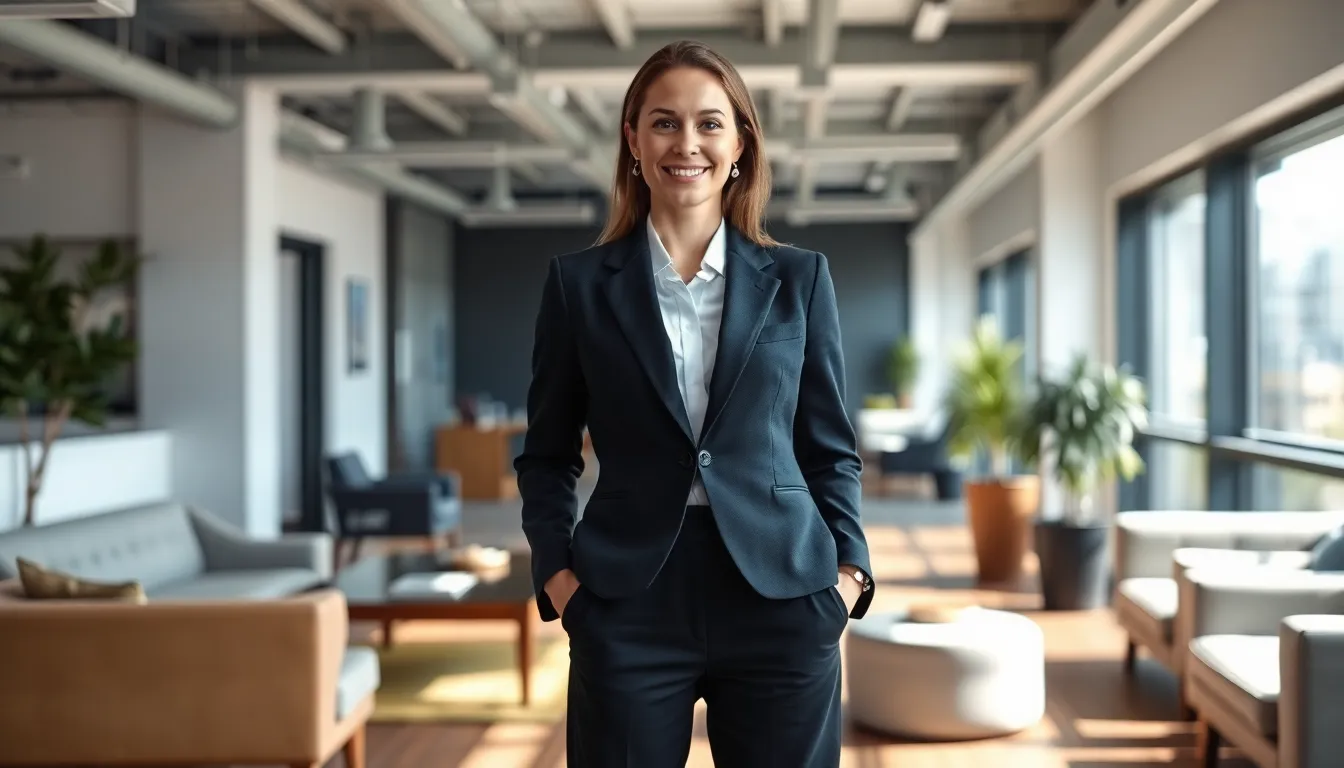
Now that we’ve covered the essential pieces, let’s explore how to combine them into polished outfits that work seamlessly in professional settings.
Blazer and Trouser Pairings
Blazer and trouser combinations form the backbone of sophisticated business casual dressing. Pairing a customized blazer in neutral colors like black, gray, or tan with well-fitted trousers creates an instantly polished look that commands respect in any office environment. Wide leg trousers offer a modern silhouette that pairs beautifully with fitted blazers, while slim fit options provide a sleek, streamlined appearance. Cropped trousers work exceptionally well with ankle boots or pointed-toe flats, creating visual interest while maintaining professionalism.
Completing these combinations with simple flats or low heels ensures comfort throughout long workdays. Navy blazers paired with charcoal trousers create a classic combination that never goes out of style, while beige blazers with navy pants offer a fresh take on traditional suiting.
Blouse and Skirt Ensembles
Blouse and skirt pairings deliver elegant femininity without sacrificing professional standards. Knee-length pencil skirts paired with blouses in solid colors create a timeless silhouette that works across industries and seasons. Pattern variations in blouses, from subtle stripes to small florals, add visual interest while maintaining office appropriateness. Soft fabric blouses in silk or quality cotton provide comfort and breathability during busy workdays.
Color flexibility allows for personal expression within professional boundaries. Neutral whites and blacks serve as reliable foundations, while vibrant tones can be incorporated thoughtfully to reflect company culture and personal style. Closed-toe shoes like loafers or pumps complete these ensembles perfectly, offering both comfort and sophistication.
Dress and Cardigan Combinations
Dress and cardigan pairings offer effortless elegance with practical layering benefits. Modest work dresses paired with lightweight cardigans or knit sweaters provide ideal answers for climate-controlled offices where temperature fluctuates throughout the day. Cardigans add polish without the formality of blazers, making them perfect for creative environments or casual Fridays.
Midi-length dresses work particularly well with structured cardigans, creating balanced proportions that flatter various body types. Footwear choices like flats or low heels maintain comfort while keeping the overall look office-appropriate. Wrap dresses paired with cropped cardigans offer versatility that transitions seamlessly from morning meetings to afternoon presentations.
Mix and Match Separates
Mix and match separates maximize wardrobe versatility while maintaining consistent professionalism. Combining skirts, trousers, blouses, blazers, and cardigans in various configurations creates multiple outfit options from fewer pieces. Pairing a blazer with a pencil skirt one day and switching to customized pants with a knit top the next demonstrates style variety without compromising workplace standards.
Accessories like structured totes and understated jewelry refine these combinations while adding personal touches. Dark, well-fitted jeans may work in relaxed environments when styled with blazers or dressy blouses, expanding outfit possibilities for casual workplace cultures. Bright colors become acceptable when balanced with neutrals and aligned with company dress codes, allowing for creative expression within professional boundaries.
Seasonal Business Casual Outfits for Year-Round Style

Adapting our business casual wardrobe to seasonal changes ensures we maintain professional polish while staying comfortable throughout the year. Strategic layering and fabric choices help us transition seamlessly from scorching summers to chilly winters.
Spring and Summer Professional Looks
Spring and summer business casual outfits prioritize breathable fabrics and lighter colors to combat warmer temperatures while maintaining workplace appropriateness. Light blouses become our go-to foundation pieces, offering versatility when paired with customized pants or midi skirts in comfortable fabrics.
Breathable button-down shirts serve as another staple, providing structure without sacrificing comfort during busy workdays. Polished knit sweaters work particularly well for air-conditioned offices, bridging the gap between indoor cooling and outdoor heat.
Customized pants in lighter fabrics keep us looking professional while ensuring comfort throughout long workdays. Midi skirts offer a feminine alternative that maintains modesty while allowing airflow, especially when crafted from breathable materials like cotton blends or linen.
Modest dresses become wardrobe heroes during warmer months, eliminating the guesswork of coordinating separates. Lightweight blazers provide instant polish when we need to elevate our look for important meetings, while cardigans offer versatile layering options without adding bulk.
Footwear choices expand during warmer seasons, with flats offering comfort for all-day wear and low heels providing subtle elevation. Clean, minimalist sneakers have gained acceptance in many modern workplaces, especially when styled with customized pieces.
Statement jewelry adds personality to our spring and summer ensembles without overwhelming the overall professional aesthetic. Strategic accessories help us express individual style while maintaining workplace appropriateness.
Fall and Winter Office Attire
Fall and winter business casual requires strategic layering to combat colder temperatures while preserving our professional image. Structured tops form the foundation of cold-weather outfits, providing clean lines that translate well under blazers or customized jackets.
Knitwear and sweaters become essential pieces during colder months, offering warmth without sacrificing style when chosen in professional silhouettes. Layering these pieces under blazers creates depth and visual interest while ensuring adequate warmth for indoor and outdoor transitions.
Darker customized pants in heavier fabrics like wool blends provide both warmth and sophistication during fall and winter months. These pieces typically offer better structure and longevity compared to their lighter-weight counterparts.
Midi to knee-length skirts in substantial fabrics maintain professional standards while providing coverage appropriate for colder weather. Wool blends and ponte knits offer stretch and warmth without compromising the customized appearance we need for workplace success.
Modest dresses in heavier fabrics continue to serve as one-piece answers during colder months, simplifying our morning routine while maintaining professional polish. Pairing these with tights extends their wearability throughout winter seasons.
Closed-toe flats become our comfort staples during fall and winter, while low heels provide elevation without sacrificing stability on potentially slippery surfaces. Boots offer both warmth and style, especially when chosen in professional silhouettes that complement our business casual aesthetic.
Structured coats and professional trench coats complete our cold-weather looks while maintaining the polished appearance essential for business environments. Deeper hues such as navy, burgundy, and charcoal prove seasonally fitting while reinforcing our professional image.
Transitional Pieces for Changing Weather
Transitional pieces become invaluable investments as they adapt to temperature fluctuations throughout unpredictable seasons. Blazers and cardigans top our list of versatile layering options, easily added when morning chill requires extra warmth or removed as afternoon temperatures rise.
These adaptable pieces eliminate the guesswork of seasonal dressing while ensuring we’re prepared for varying office climates and outdoor conditions. Quality construction in these transitional items pays dividends through extended wearability across multiple seasons.
Layered dresses offer maximum versatility for changing weather patterns, transforming from standalone summer pieces to layered winter outfits. Pairing dresses with tights and boots creates cold-weather appropriate looks, while wearing them alone or with flats works perfectly for warmer months.
This approach maximizes our wardrobe investment while ensuring we have appropriate options regardless of seasonal shifts. Strategic styling allows single pieces to serve multiple seasonal functions without requiring extensive wardrobe overhauls.
Versatile pants in mid-weight fabrics bridge seasonal gaps effectively, providing comfort and professional appearance whether temperatures soar or plummet. These pieces typically feature construction that works across multiple seasons without appearing obviously seasonal.
Footwear transitions require strategic planning to maintain professional polish throughout changing seasons. Moving from open flats or loafers in spring and summer to closed boots or shoes in fall and winter ensures our professional image remains consistent while adapting to weather requirements.
This systematic approach to seasonal transitions helps us maintain workplace appropriateness while maximizing the versatility of our existing business casual pieces.
Business Casual Footwear Options That Balance Comfort and Style

Selecting the right footwear for business casual outfits requires finding options that maintain professional standards while providing all day comfort. Smart shoe choices can elevate your entire look while keeping you comfortable during long workdays.
Professional Flats and Loafers
Professional flats offer an ideal solution for women seeking comfort without sacrificing style in their business casual wardrobe. Ballet flats in leather or suede materials provide a sleek appearance that pairs perfectly with customized pants, modest knee length dresses, and structured skirts.
Loafers deliver a sophisticated slip on option that works exceptionally well with dark wash jeans and blazer combinations. Classic penny loafers in black or brown leather create a polished foundation for any business casual ensemble. Modern pointed toe flats add visual interest while maintaining the professional aesthetic your workplace demands.
Leather materials ensure durability and easy maintenance, making these styles practical investments for your work wardrobe. Cushioned insoles and quality construction help prevent foot fatigue during busy office days.
Low-Heel Pumps and Block Heels
Low heel pumps add sophistication to business casual outfits while providing more stability than traditional high heels. Block heels ranging from 1 to 2 inches offer the perfect balance between professional elevation and comfortable wear throughout your workday.
Closed toe styles in neutral colors like black, navy, or nude complement virtually every business casual combination in your wardrobe. These versatile options work seamlessly with both customized pants and modest dresses while maintaining workplace appropriate standards.
Block heel construction provides better weight distribution and reduces pressure on the balls of your feet compared to stiletto styles. This design feature makes them particularly suitable for women who spend considerable time walking or standing during their workday.
Quality materials like genuine leather ensure these shoes maintain their professional appearance even with regular wear. Consider investing in two pairs in complementary neutral tones to maximize your styling options.
Ankle Boots for Modern Office Looks
Ankle boots bring contemporary style to business casual footwear while offering versatility across multiple seasons. Low profile ankle boots with modest heel heights work perfectly with customized pants, creating a modern silhouette that feels fresh and professional.
Leather ankle boots in black or brown tones provide excellent styling flexibility with both pants and knee length skirts. These modern options particularly complement structured cardigans and blazers during transitional weather periods.
Sleek designs with minimal hardware maintain the professional aesthetic while adding visual interest to your business casual outfits. Choose styles with comfortable block heels or flat soles depending on your daily activity level and personal preference.
Weather resistant materials make ankle boots practical choices for year round wear, helping you maintain a polished appearance regardless of outdoor conditions. Quality construction ensures these versatile pieces will serve as reliable wardrobe staples for multiple seasons.
Accessories That Elevate Your Business Casual Wardrobe
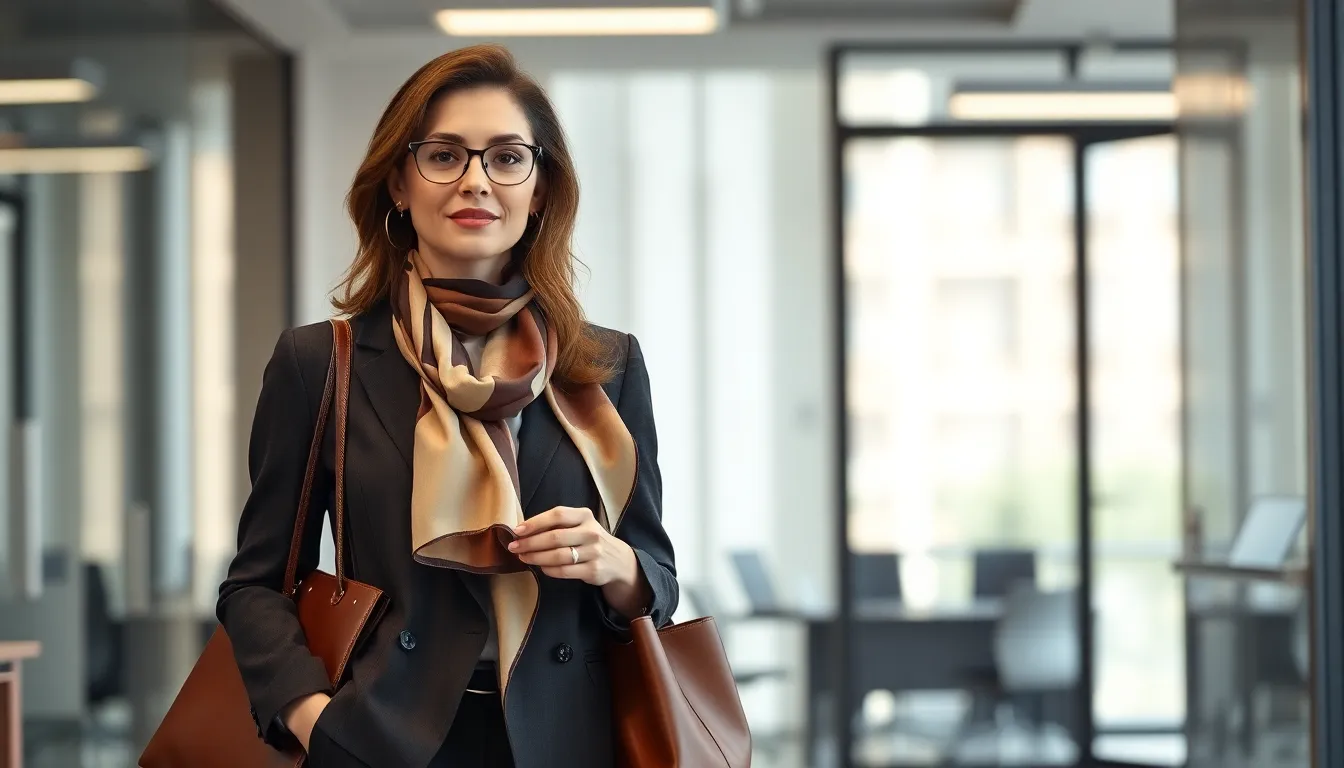
The right accessories transform basic business casual pieces into polished, professional looks while expressing your personal style. We’ll explore how strategic accessory choices can enhance your workplace wardrobe without overwhelming your overall appearance.
Statement Jewelry for Professional Settings
Bold jewelry pieces add personality to business casual outfits while maintaining workplace appropriateness. Classic bracelets create visual interest when paired with three-quarter sleeve blazers or rolled-up shirt sleeves. Pendant necklaces work beautifully with open-collar blouses and V-neck sweaters, drawing attention to your neckline in a sophisticated way.
Elegant earrings serve as focal points that complement your hairstyle and facial features. Choose pieces with clean lines and quality materials like gold, silver, or pearls for maximum versatility. Statement rings can enhance your gestures during presentations and meetings when kept tasteful and not overly ornate.
Quality matters more than quantity when building your professional jewelry collection. Invest in versatile pieces that coordinate with multiple outfits rather than trendy items that quickly become dated.
Handbags and Briefcases for Work
Structured leather totes provide the perfect blend of functionality and style for the modern working woman. These spacious bags accommodate laptops, documents, and daily essentials while maintaining a polished appearance. Satchels offer a more compact alternative that works well for lighter workdays or when carrying fewer items.
Sleek briefcases create an authoritative presence in professional settings, particularly in finance, law, and corporate environments. Choose neutral colors like black, brown, or navy that complement your existing wardrobe pieces. Quality construction ensures your investment piece withstands daily use while maintaining its professional appearance.
Consider your daily needs when selecting work bags. Multiple compartments help organize essentials, while adjustable straps provide comfort during commutes. Leather and high-quality synthetic materials offer durability and easy maintenance.
Scarves and Belts as Finishing Touches
Scarves add subtle color and pattern variations that brighten neutral business casual outfits. Drape them neatly around your neck or tie them in professional styles that complement your outfit’s neckline. Silk scarves work particularly well with blazers and cardigans, creating layered looks that appear intentional and polished.
Belts help define your waistline in pants and dresses while adding customized finishing touches. Slim to medium-width styles in leather or quality fabric materials work best for business casual settings. Choose colors that coordinate with your shoes for a cohesive appearance.
Strategic placement of these accessories creates visual balance in your outfits. Belts can transform loose-fitting dresses into structured silhouettes, while scarves can bridge color gaps between separates. Both accessories offer affordable ways to refresh existing pieces in your wardrobe rotation.
Color Coordination and Pattern Mixing for Business Casual Success
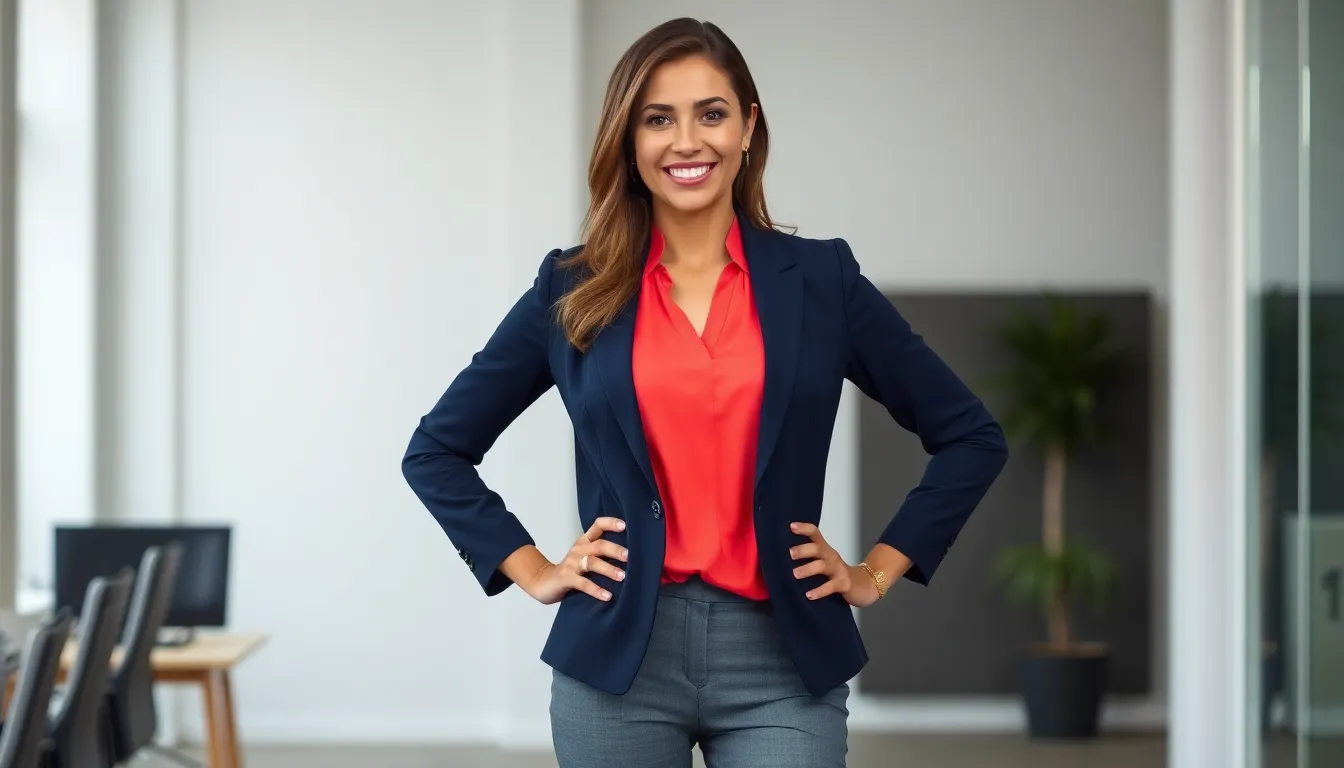
Building upon our foundation of essential pieces and seasonal considerations, we now turn to the art of color coordination and pattern mixing. Strategic color choices and thoughtful pattern combinations can transform basic business casual pieces into sophisticated, polished outfits that reflect your personal style while maintaining workplace appropriateness.
Neutral Color Palettes for Versatility
Neutral colors form the backbone of every successful business casual wardrobe due to their unmatched adaptability and mixing potential. Classic neutrals like black, white, gray, navy, tan, and beige serve as reliable base colors for our customized pants, blazers, skirts, and blouses. These timeless shades create clean, professional appearances while providing endless opportunities for creativity through accessories and layering pieces.
We recommend building your core wardrobe around these neutral foundations because they eliminate guesswork when getting dressed. Navy blazers pair effortlessly with white blouses and gray trousers, while beige cardigans complement black dresses and tan accessories. This approach ensures every piece in your closet works harmoniously together, maximizing your outfit combinations without the risk of clashing colors.
Smart shopping strategies involve investing in high-quality neutral pieces first, then adding colorful accents later. We suggest starting with three neutral blazers, five neutral tops, and three pairs of neutral bottoms to create a solid foundation that supports countless outfit variations.
Incorporating Pops of Color Professionally
Adding personality to business casual outfits doesn’t require compromising professionalism when we introduce color strategically through targeted pieces. Vibrant blouses, colored sweaters, bright scarves, and colorful shoes can inject life into neutral-heavy wardrobes while maintaining workplace appropriateness. The key lies in balancing bold colors with neutral staples to avoid overwhelming our overall look.
We achieve this balance by pairing one colorful piece with neutral companions. A bright coral blouse looks stunning with a black blazer and navy trousers, while emerald green sweaters pair beautifully with gray pants and black accessories. This approach adds visual interest and freshness to our outfits, making them suitable for creative or relaxed business environments while respecting established dress codes.
Color psychology plays a role in our professional image, with certain shades conveying confidence and competence. Deep blues suggest trustworthiness, rich burgundy implies sophistication, and forest green communicates stability. We can leverage these associations by incorporating these colors into our business casual rotation through tops, accessories, or structured pieces.
Mixing Patterns Without Overwhelming Your Look
Pattern mixing in business casual attire requires subtlety and harmony to maintain professional standards while adding visual depth to our outfits. We can successfully combine patterns by starting with small prints like pinstripes or polka dots paired with solid pieces, then gradually experimenting with different pattern scales. A striped shirt with a subtle plaid skirt creates sophisticated contrast without appearing cluttered.
The golden rule involves limiting patterns to avoid visual overload in our business casual ensembles. Generally, we pair one patterned item with neutrals or simple textures to maintain balance and professionalism. This strategy allows the pattern to serve as a focal point while keeping the overall look cohesive and workplace appropriate.
Scale variation becomes crucial when we do combine multiple patterns in one outfit. Large florals work well with thin stripes, while small geometric prints complement subtle checks or tweeds. We ensure patterns share at least one common color to create visual connection and prevent the outfit from appearing disjointed or overwhelming to colleagues and clients.
Budget-Friendly Business Casual Shopping Strategies
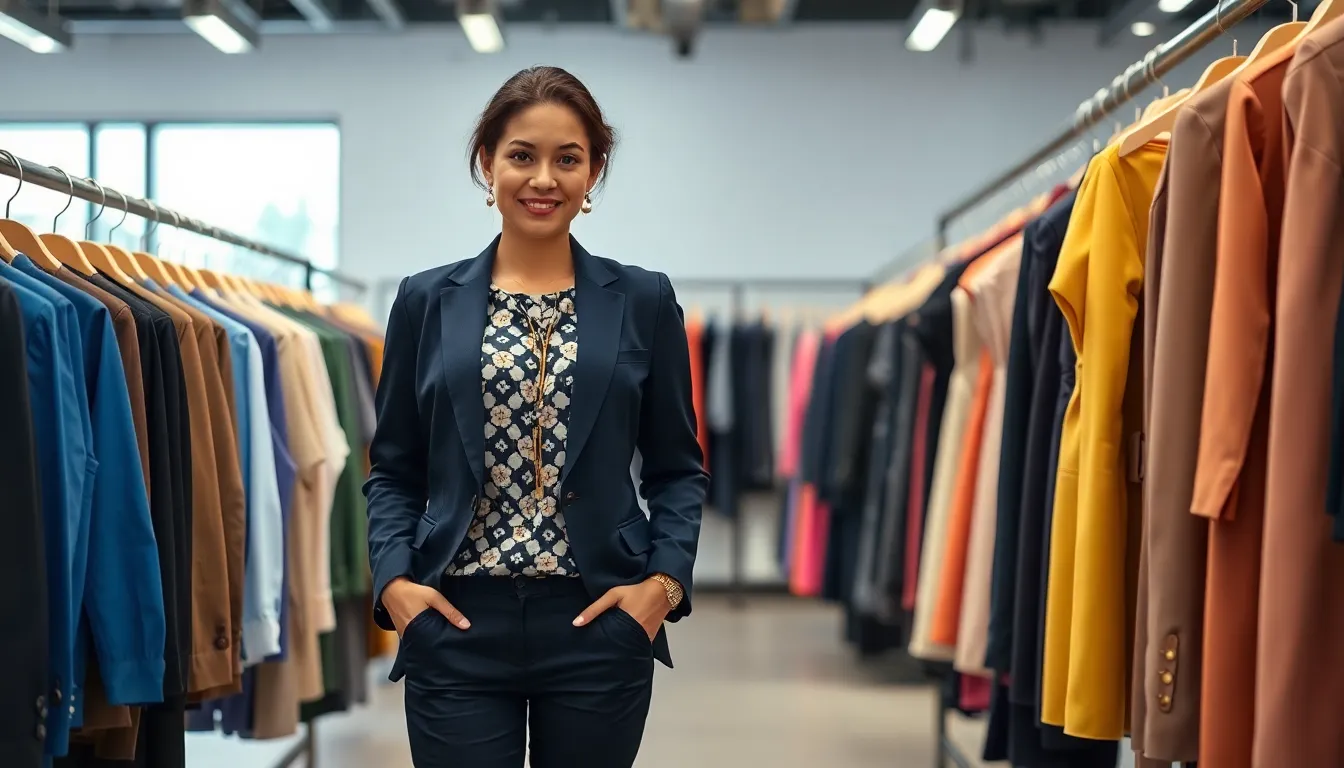
Building a professional wardrobe doesn’t require very costly when you approach shopping with smart strategies and clear priorities. We’ll show you how to create a polished business casual collection through strategic investments and savvy shopping techniques.
Investment Pieces Worth the Splurge
Customized blazers deserve your biggest investment because they instantly elevate any outfit and work across all seasons. Quality blazers in classic cuts provide long-term value and can transform casual pieces into professional ensembles. We recommend prioritizing well-constructed blazers in navy, black, or neutral tones that complement your existing wardrobe.
Quality trousers offer exceptional return on investment since they serve as the foundation for countless outfits. Well-fitted pants in classic cuts like slim, wide-leg, and cropped styles provide versatility and durability. Professional women benefit from investing in 2-3 pairs of high-quality trousers that maintain their shape and color after multiple wears.
Statement dresses combine style and versatility in a single garment that can be dressed up or down for various occasions. Durable, well-constructed dresses in classic silhouettes offer long-term wardrobe value. We suggest investing in midi-length dresses that can transition from business meetings to networking events with simple accessory changes.
Comfortable business shoes ensure you can maintain professional appearances without sacrificing foot comfort throughout long workdays. Good quality flats, loafers, or low heels that combine style with proper support prevent fatigue and maintain your professional image. Quality footwear construction makes these pieces worth the initial investment.
Affordable Alternatives for Building Your Wardrobe
Structured cardigans provide professional polish at a fraction of blazer costs while offering similar styling versatility. Customized vests create sophisticated layering options that work with various tops and bottoms. Polished knit sweaters give you professional coverage without the expense of traditional blazers.
Patterned blouses add personality and visual interest to your wardrobe without requiring expensive statement pieces. Colorful tops in classic cuts provide versatility while staying budget-friendly. We find that mixing these affordable pieces with neutral basics creates ever-changing outfits that appear more expensive than their actual cost.
Sweaters and knitwear blend seamlessly with formal pieces to create balanced, professional looks at lower price points. Casual pieces like structured cardigans can be paired with customized trousers for sophisticated combinations. This mixing approach allows you to stretch your budget while maintaining workplace appropriateness.
Dark-wash jeans work in business casual environments when styled appropriately with blazers or structured tops. Well-fitted jeans without distressing can substitute for expensive trousers in relaxed office settings. We recommend choosing darker colors that appear more professional and polished.
Shopping Sales and Seasonal Discounts
End-of-season clearances offer the best opportunities to acquire blazers, pants, and professional shoes at significantly reduced prices. Retailers typically discount winter coats and wool blazers in spring, while summer pieces go on sale in early fall. We suggest shopping these sales to build your wardrobe gradually without overspending.
Holiday promotions provide excellent timing for stocking up on business casual essentials like neutral blouses and basic trousers. Black Friday, end-of-year sales, and back-to-work promotions often feature professional clothing at substantial discounts. Planning your purchases around these events maximizes your buying power.
Brand newsletters deliver exclusive discounts and early access to sales from companies specializing in business casual attire for women. Subscribing to these communications keeps you informed about upcoming promotions and special offers. We recommend following 3-5 brands that align with your style preferences and budget requirements.
Capsule wardrobe planning helps you focus purchases on essential pieces that create multiple outfit combinations efficiently. Building around a core of 2 dresses, 5 tops, 4 bottoms, and 2 jackets creates many styling options while keeping costs manageable. This strategic approach prevents impulse purchases and ensures every item serves multiple purposes in your professional wardrobe.
Common Business Casual Mistakes to Avoid in Professional Settings

Even with a well-curated wardrobe, it’s easy to make missteps that can undermine your professional image. We’ll explore the most frequent business casual errors to help you maintain workplace appropriateness while expressing your personal style.
Inappropriate Clothing Choices for the Office
Revealing or overly tight clothing tops the list of business casual mistakes that can damage your professional reputation. Short dresses and skirts that don’t hit at or below the knee create an inappropriate workplace appearance. Tight-fitting garments that cling to your body or show excessive skin send the wrong message in professional settings.
Low-cut tops and sheer fabrics compromise your credibility in business environments. Blouses with plunging necklines or see-through materials require additional layering to meet workplace standards. Sleeveless tops without blazers or cardigans may appear too casual for certain office cultures.
Casual footwear choices like flip-flops, athletic sneakers, or overly strappy sandals detract from polished business casual outfits. Open-toed shoes with bright nail polish or casual flip-flops belong in weekend wardrobes, not professional settings. Clean sneakers may work in relaxed tech environments, but they’re inappropriate for traditional corporate offices.
Fit and Styling Errors That Undermine Your Look
Poor-fitting clothing immediately signals unprofessionalism, regardless of garment quality or style. Baggy pants that bunch at the ankles or blazers with sleeves extending past your wrists create a sloppy appearance. Overly tight clothing that restricts movement or creates unflattering lines equally undermines your professional image.
Mixing casual pieces incorrectly leads to outfits that appear confused rather than intentionally styled. Wearing jeans without structured tops like blazers or button-down shirts makes the ensemble too casual for most business settings. Pairing athletic wear with business pieces creates visual disconnect that appears unprofessional.
Neglecting garment care shows lack of attention to detail that colleagues and clients notice. Wrinkled clothing, visible stains, or frayed hems communicate carelessness about your professional presentation. Clean, well-maintained garments are essential for maintaining credibility in business casual environments.
Overdressing or Underdressing for Your Workplace
Ignoring workplace culture leads to outfit choices that don’t align with your company’s expectations and norms. Finance environments typically require more formal business casual pieces, while tech companies may embrace relaxed interpretations with dark jeans and casual blazers. Observing what successful colleagues wear provides valuable guidance for appropriate attire levels.
Failing to balance formal and casual elements results in looks that miss the business casual mark entirely. Wearing full suits when colleagues dress more casually makes you appear out of touch with company culture. Conversely, choosing overly casual pieces like yoga pants or graphic tees fails to meet professional standards.
Not adapting to exact events within your workplace creates missed opportunities for appropriate dressing. Client meetings require more polished looks than typical office days, often calling for structured blazers and refined accessories. Team-building events or casual Fridays may allow relaxed interpretations, but maintaining professional elements keeps your image consistent.
Industry-Specific Business Casual Guidelines for Different Workplaces

Workplace culture significantly influences how we interpret and execute business casual attire. Understanding these industry nuances helps us make confident clothing choices that align with professional expectations.
Corporate Office Environments
Corporate settings demand the most polished interpretation of business casual, where we prioritize structured pieces that convey authority and professionalism. Customized business pants paired with crisp oxford shirts or button-up blouses create the foundation for these environments. We recommend adding blazers to complete the sophisticated look that’s expected in finance and traditional corporate offices.
Footwear choices should emphasize professionalism through office-appropriate heels or polished flats that maintain comfort during long workdays. Neutral color palettes dominate these spaces, though we can incorporate pastels and bold hues when styled thoughtfully with classic pieces. Accessories like structured handbags and minimal jewelry enhance the overall professional appearance.
Client interactions and virtual meetings require us to maintain this elevated standard consistently. We suggest preparing outfits that photograph well on camera while projecting confidence in person. Layering pieces like cardigans or blazers provide versatility for temperature changes between offices and conference rooms.
Creative and Tech Industries
Creative and tech workplaces embrace more relaxed business casual interpretations that allow personal expression while maintaining professional standards. We can incorporate more color, patterns, and comfortable pieces like knit sweaters or structured cardigans that reflect the innovative culture. Polos paired with blazers offer a perfect balance between casual comfort and professional polish.
Well-fitted dark denim becomes acceptable in these environments when we pair it with structured tops or blazers. Sneakers have gained popularity in tech settings, though we should choose sleek, minimal designs that complement business casual pieces rather than athletic styles. Breathable fabrics become essential for comfort during long creative sessions or coding marathons.
Pattern mixing and bold colors find more acceptance in these industries, allowing us to showcase personality through our wardrobe choices. We recommend starting with subtle patterns and gradually incorporating bolder pieces as we gauge our exact workplace culture. Layering different textures and casual elements creates visual interest while maintaining professionalism.
Client-Facing Roles and Meetings
Client-facing positions require us to lean toward the formal end of business casual, where first impressions directly impact professional relationships. Blazers become non-negotiable pieces that instantly elevate any outfit to meeting-appropriate levels. We pair them with customized trousers or midi skirts that project confidence and competence.
Clean, professional footwear like low heels or leather flats ensures we maintain authority while staying comfortable during client presentations. Avoiding overly casual pieces like t-shirts or athletic shoes becomes crucial unless our company culture explicitly permits these items. Structured tops and modest necklines demonstrate respect for client relationships and professional boundaries.
Versatility between office and meeting environments requires strategic outfit planning that transitions seamlessly throughout the day. We suggest choosing pieces that photograph well for virtual meetings while maintaining their professional appearance in person. Layering options like blazers or cardigans allow quick adjustments between different professional settings without requiring complete outfit changes.
Conclusion
Building a successful business casual wardrobe doesn’t have to be overwhelming or expensive. We’ve shown you that with the right foundation pieces versatile styling strategies and smart shopping approaches you can create countless professional looks that reflect your personal style.
The key lies in investing in quality basics that mix and match effortlessly while understanding your workplace culture and industry expectations. From blazers and trousers to the perfect accessories these pieces work together to keep you looking polished and confident every day.
Remember that business casual is about finding the sweet spot between professional and approachable. With these outfit formulas and styling tips you’re equipped to navigate any workplace situation while expressing your unique style and maintaining the professional image that empowers your career success.
Frequently Asked Questions
What are the essential pieces every woman needs for a business casual wardrobe?
Essential pieces include three core blazers (navy, black, and neutral gray/beige), versatile blouses and button-down shirts, professional pants in straight-leg and wide-leg styles, work-appropriate skirts (pencil and A-line), and midi-length dresses. These foundational items can be mixed and matched to create multiple professional outfits.
How do I choose the right blazer for business casual attire?
Focus on quality fabrics and proper fit. Invest in three core styles: a classic navy blazer for versatility, a black tailored blazer for formal occasions, and a neutral gray or beige blazer for softer looks. Ensure the blazer fits well through the shoulders and can be comfortably buttoned.
What types of pants work best for business casual environments?
Professional pants should include straight-leg, wide-leg, and ankle-length styles in quality fabrics that maintain their shape. Choose comfortable materials that look polished throughout the day. Avoid overly tight or casual fabrics, and ensure proper fit for a professional appearance.
How can I adapt my business casual wardrobe for different seasons?
For spring/summer, choose breathable fabrics and lighter colors with modest dresses and lightweight blazers. For fall/winter, focus on strategic layering with structured tops, knitwear, and heavier tailored pants. Use transitional pieces like blazers and cardigans to adapt to changing weather while maintaining professionalism.
What footwear is appropriate for business casual dress codes?
Professional flats and loafers offer comfort and versatility, while low-heel pumps and block heels provide sophistication and stability. Ankle boots work well across seasons as a modern option. Prioritize quality materials and construction for durability and all-day comfort while maintaining professional standards.
How do I mix patterns and colors in business casual outfits?
Build your foundation with neutral colors (black, white, gray, navy, tan, beige) that maximize outfit combinations. Add pops of color through blouses, sweaters, and accessories. When mixing patterns, start with small prints paired with solid pieces and limit patterns to avoid visual overload.
What are common business casual mistakes to avoid?
Avoid revealing or overly tight garments, low-cut tops, and casual footwear. Ensure proper fit and avoid mixing casual pieces incorrectly. Maintain garment care by keeping clothes wrinkle-free and stain-free. Consider workplace culture to avoid overdressing or underdressing for your specific environment.
How does business casual vary across different industries?
Corporate environments require polished, structured pieces like tailored pants and blazers. Creative and tech industries allow more personal expression with colors and patterns while maintaining professionalism. Client-facing roles need more formal attire with blazers and clean footwear to project confidence and authority.
